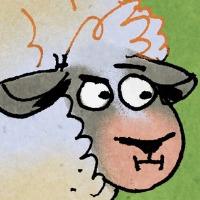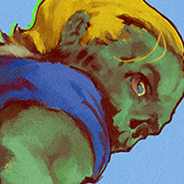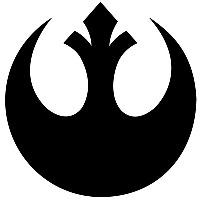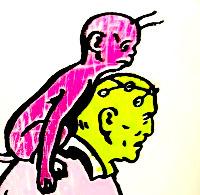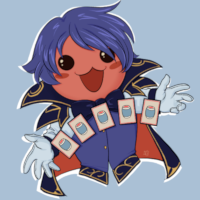Mythbusting the year's best game.
Here’s my review of Descent: Legends of the Dark. It is the best and most important game released by a major publisher in 2021, and it is the new standard by which I will judge all future dungeon crawl or RPG style board games. It is a tremendous success – for the first time ever, a board game actually feels like a D&D session. The mechanisms, particularly the way it handles strategic fatigue management, are engaging and the narratives it creates are always delightful, specific, and creative offering so much more in terms of story and character than what previous board games in this design space have managed to muster, even when leveraging mountains of junk components and cruft scenarios. It is a lighter but better game than Gloomhaven, yet it still provides an epic campaign with lots of surprises and unexpected turns. The app is brilliant to the point where I don’t think I ever want to play a game like this with a card-based AI or whatever again. Five stars, all the way.
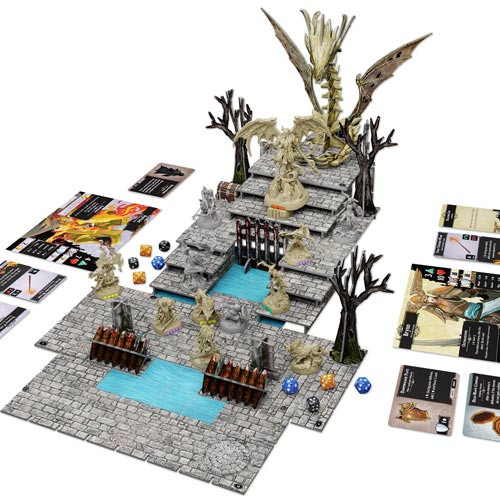
Alright, so that’s all I’m going to give in terms of my review, don’t wait around for the rules summary. I’d rather take a different approach for the remainder of my time here. When it was first announced, the internet dogpiling started. When the art was revealed and the app, there was wailing and gnashing of teeth. FFG released a not-so-great live play that caused middle aged white men to take to YouTube, pensively lamenting that this could be the death of the Descent brand. Moronic “fans” posted idiotic messages to forums – please read this in the whiniest, most entitled manchild voice you can - “why don’t they just reprint 2nd edition” or “we can only hope that this game fails so they will do a REAL 3rd edition”. Then there were the smug jackasses tapping out “HARD PASS” on their iPhones and tablets due to the fact that it’s an app-based game. And then the coded ire toward the diverse, inclusive character artwork started to creep in to the discussion, as did some folks who couldn't handle the psychic shock of seeing the name of a female lead designer on the box.
This storm of negativity culminated in a couple of high profile reviewers posting middling reviews that, to my mind, showed these people to be behind the times, resistant to change, and quite honestly not very experienced with actually playing the game. I suspect that at least one name reviewer just tapped through the scenarios in the app without actually playing them. Which is kind of a common theme among the negative comments, including all the pre-release BGG ratings of 1- most of the folks who don’t like this game simply haven’t played it. All these “myths” have emerged about the game, so I’m going to dismantle them.
Myth #1 – “It’s a video game, not an app!”- Absolute bullshit. The app, which is an evolution of what we’ve already seen FFG do with Mansions of Madness and Journeys in Middle Earth, is not “75% of the game” as some armchair analysts out there have suggested and in fact I’ve found that offloading the really boring administrative stuff like triaging enemy activations and remembering special abilities (neither of which are gameplay, by the way) to the app has made the on-the-table play more engaging, exciting, and fun. You are still doing exactly the same kinds of things and making the same kinds of decisions you would do in Descent 2nd edition, but you aren’t bogged down with admin work. The app also enables a much more robust type of scenario development, with surprise turns of events and a much stronger sense of exploration than we’ve seen in past games in this genre. Further, it also makes all the “downtime” activities like on-trend crafting and between session item management easy and self- contained. But it never once feels like playing an “app game” like some of the more asinine detractors have suggested. And don’t get me started on the Luddites who are terrified that they won’t be able to play this game in 20 years if the app disappears.
Myth #2 – “There’s too much reading” – Absolute bullshit. This was one of the weirder review comments I’ve seen, and not just because the man delivering it was dressed like Fozzie Bear. There is no more reading in the app than there is in a typical FFG or any game with a scenario book or cards. The difference is that the reading is on the screen. Now, this does roll up into a criticism I have with the game, and that is that I wish that all of the narrative text were spoken in the app. As it stands, someone has to read it aloud to the table which seems like a missed opportunity to further use the app to increase immersion. But unless you are the kind of fun-murdering stick-in-the-mud that doesn’t read out the story text on Arkham Horror cards or whatever and just silently rolls the dice for the outcome, it’s really just a change in where you are reading the text.
Myth #3 – “The writing is bad” – Absolute bullshit. Another bizarre comment, seemingly grasping for something to be negative about. Let’s be blunt. There has not been a board game to date that had “great” writing to begin with. The writing in this game, although still not great, is in the top tier of what board games offer. The characters are surprisingly well-developed, interesting, diverse, and there is a sense of guiding their development through simple moral choices throughout the campaign. But where the writing starts to push into “great” territory is in the actual scenario design. These are the best scenarios ever written for an adventure board game full stop. In my plays, I was continually surprised at where the story was going and a few times my jaw dropped at a revelation or an unexpected event. I don’t want to spoil any of it. But here’s a teaser. There is a scenario where a door has to be unlocked in a dream. One character has to sleep to perform this task, and while they are asleep they sleepwalk and the rest of the party has to protect them. They have a separate map in the dream and have to overcome some challenges there. I’ve never seen anything as layered and dynamic in a board game before.
Myth #4- “The art is bad.” – Absolute bullshit. Look, there’s no accounting for taste, et cetera, but there isn’t anything “bad” about the illustrations in this game. They are fresh, modern, exciting, and most importantly idiosyncratic. With this game, FFG is finally breaking out of the gauche post- anime, post-World of Warcraft house visual style that was already getting dated when they adopted it years ago. The characters look intriguing and unique with a more stylized, sophisticated take on fantasy tropes than pretty much anything else out there right now in the board game field. The unique look, along with the good writing mentioned above, also has another unexpected effect: this is the first game that FFG has ever made where I felt like Terrinoth was a viable, compelling setting.
Myth #5 – “Why did they even call it Descent, this is not Descent.”- Absolute bullshit.Truth be told, this game feels more like Descent than any previous edition of the game has because it feels like how I always wanted Descent to feel. Let me qualify that however. If you wanted Descent to be a grindy, crunchy tactical miniatures game with a faux DM managing spawns and fussing around with threat tokens and players hunkering over a spread of cards trying to work out how to spend surges and block yet another spawn by moving into LOS – then maybe this won’t feel like Descent to you. But if you always wanted Descent to be the platonic idea of an RPG-style dungeon crawl presented in a board game format, here it is.
Myth #6 – “It’s too expensive.” Absolute bullshit in my opinion, but YMMV. I’m not about to sit here and tell you that $175 isn’t too expensive. It absolutely is, and to put it bluntly I would not have bought this game if I didn’t a) make a fairly lucrative sale of another game and b) recoup $100 of the cost by selling the preorder bonuses. The reality of it is that this game is about on par with other titles with similar gameplay and component density, and with a street price closer to $140 it’s not that much more than Gloomhaven. But I think there’s more value here than meets the eye- or that has been suggested by those who think there’s somehow “not enough” in the box. The miniatures are very close to GW quality, and the cardboard terrain is plentiful and well-engineered, as is the unique box to store all of this. There’s also the app development that somebody’s got to pay for, and that is inevitably a part of the cost here. I’m not going to defend a game’s MSRP here, but the lack of perspective about the cost is a pretty hilarious given how much many folks spend on lesser games annually- often sight unseen and with delivery dates a year later. This is a thoughtful, well-considered product all told, and I’ve seen Kickstarters selling for twice this that looked worse and had poorer quality components. As usual, the cost issue is a personal consideration, but I would advise considering it in context rather than just with pearl-clutching sticker shock.
Myth #7 – “It’s really a solo game.” Partial bullshit. It’s just fine with a group, but I would warn that there are elements in the downtime for example where one player is engaging with the game via the app and others are not. The group decisions and strategizing are just as fun as they are in any other game like this, and coordinating actions, skills, potions, abilities, and so forth is fun. It’s definitely a co-op design. Now, with all of that said, I’ve chosen deliberately to play most of my sessions solo. I’ve had good fun with two others going through the game, but it has been best as a solo game. Without worrying about other’s entertainment, I can take my time with it and really get stuck in. I can read the text to myself and do the in-between quest activities on my own. It’s pretty easy to manage four characters, but you can also drop down to just one if you really want. I would go so far as to say that it is by far the best way on the market for a solo player to play an RPG-style game.
The bottom line here is that this is a game you’ve really got to try for yourself to see where your opinion on the game lies rather than listening to these negative comments, most of which were set before the game was ever in anyone’s hands. I’m certainly not suggesting that all criticisms of it are invalid and there are some things I’d take it to task for myself. For example, I think the game stops short of being a truly groundbreaking, paradigm-shifting event possibly by remaining too beholden to past examples of this type of game. I also think there are some balance issues with the difficulty, and I’ve seen a couple of scenarios where I felt like the enemy spawns were spammy and annoying, adding nothing to the story or the actual challenge. And it can feel a little repetitive – granted, I completely slammed through six quests in the span of as many days before I decided to slow it down and allow the game to live on my shelf to be brought down for a play a week or so. There is a degree of novelty throughout the design that can easily be worn away, which may mean that replay value of these specific scenarios will be limited. There are also some issues with the app - some things that just aren’t transparent or presented in a logical way and there have been a couple of technical hiccoughs reported, although I haven’t encountered any yet.
But even with some minor demerits, this game has blown me away and that’s quite unexpected given that I wasn’t really planning on getting it until I saw how divisive and disruptive it was turning out to be- I wanted to get in here and cover it just in case it turned out to be something special, and it is. It’s also ironic because I was kicked off the FFG press list over ten years ago specifically at the request of the company president because I wrote a negative article called “The Descent of Descent”. I played 2nd edition, I thought it was OK, but I wasn’t prepared to be so won over by this iteration. Let alone that I’ve spent the last couple of years berating FFG for a complete lack of vision or sense of relevancy as they bury themselves under a mountain of HP Lovecraft shit and miscellaneous license obligations. But here we are - Descent has ascended.
 Games
Games How to resolve AdBlock issue?
How to resolve AdBlock issue? 

















